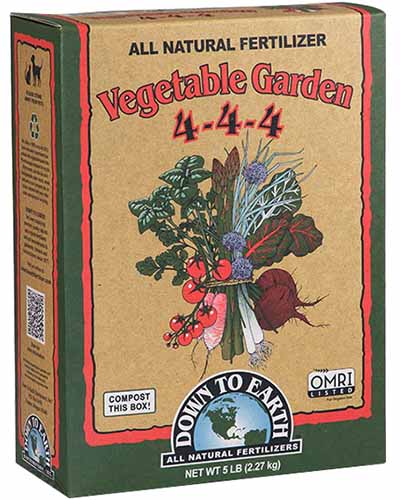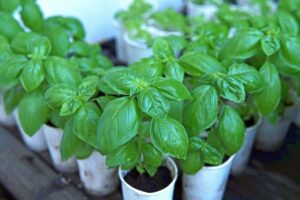With a plant that takes so long to mature, there’s a lot of time for things to go wrong. One of the many things that might happen is that your garlic’s leaves may fall over.
It’s not necessarily a death sentence, but it’s definitely something you need to figure out so you can prevent it from turning into a bigger issue.
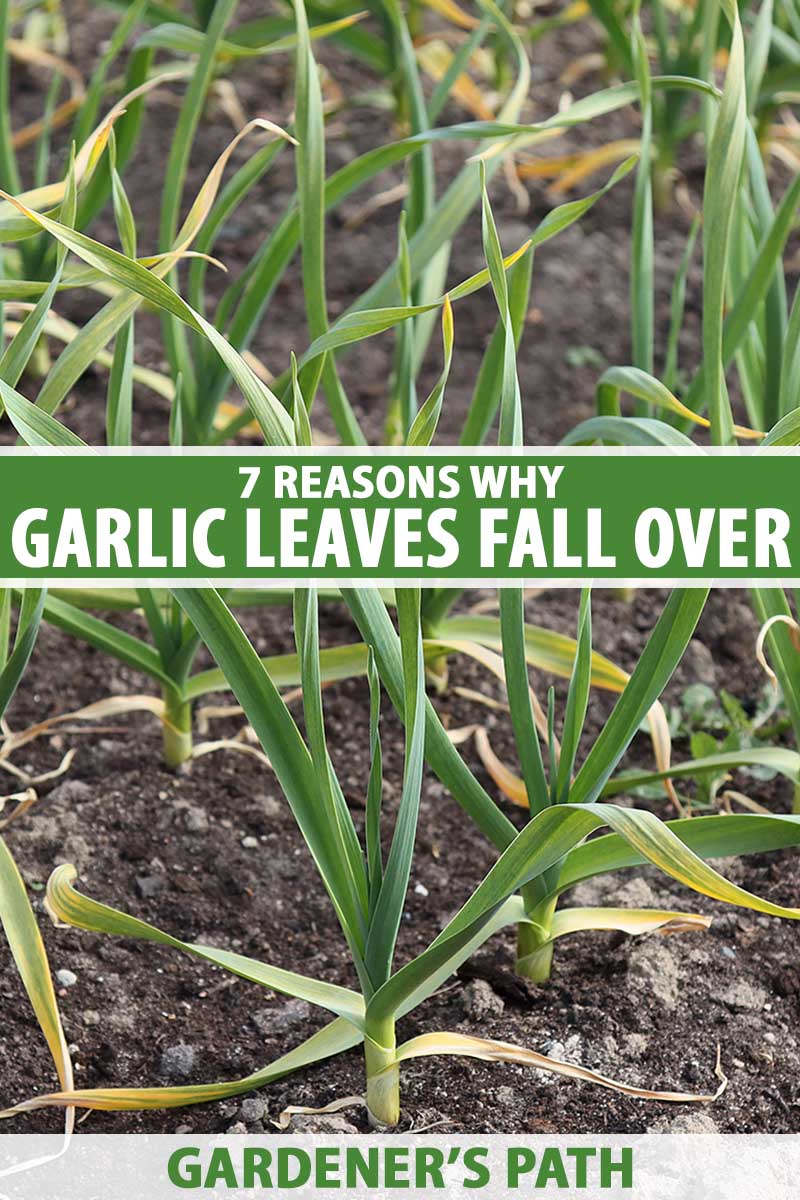
We link to vendors to help you find relevant products. If you buy from one of our links, we may earn a commission.
Most of the common causes will result in just a few leaves falling over, rather than the whole plant.
If all the leaves fall in the same direction, there’s usually only one cause for that. But discolored and collapsing leaves might indicate yet another cause.
Garlic takes a long time to grow, and you really don’t want to have to deal with problems if you can avoid it – especially when harvest time is close.
See our guide to growing garlic for more of the basics. Coming right up, we’ll go over seven causes of collapsing foliage.
Here’s everything we’ll cover:
7 Reasons Why Garlic Leaves Fall Over
1. Bad Weather
Think back over the past 24 hours. Did you have a lot of wind, heavy rain, or some hail? Inclement weather can cause the leaves to blow over or become crushed.
If you’ve had inclement weather since you last looked over your garlic bed, it’s safe to assume that Mother Nature is the cause of the limpness.
If this is the case, the plants should recover on their own unless it appears that the actual bulb has been shifted in the ground.
In that case, you might want to pull up a bulb and see if the roots were damaged if the bulb was severed from the leaves. If that happens, pull the bulbs and enjoy the immature garlic and leaves.
Otherwise, it’s fine to prop the leaves back up if you can, but you don’t need to.
2. Disease
Several diseases will cause the leaves of garlic to fall.
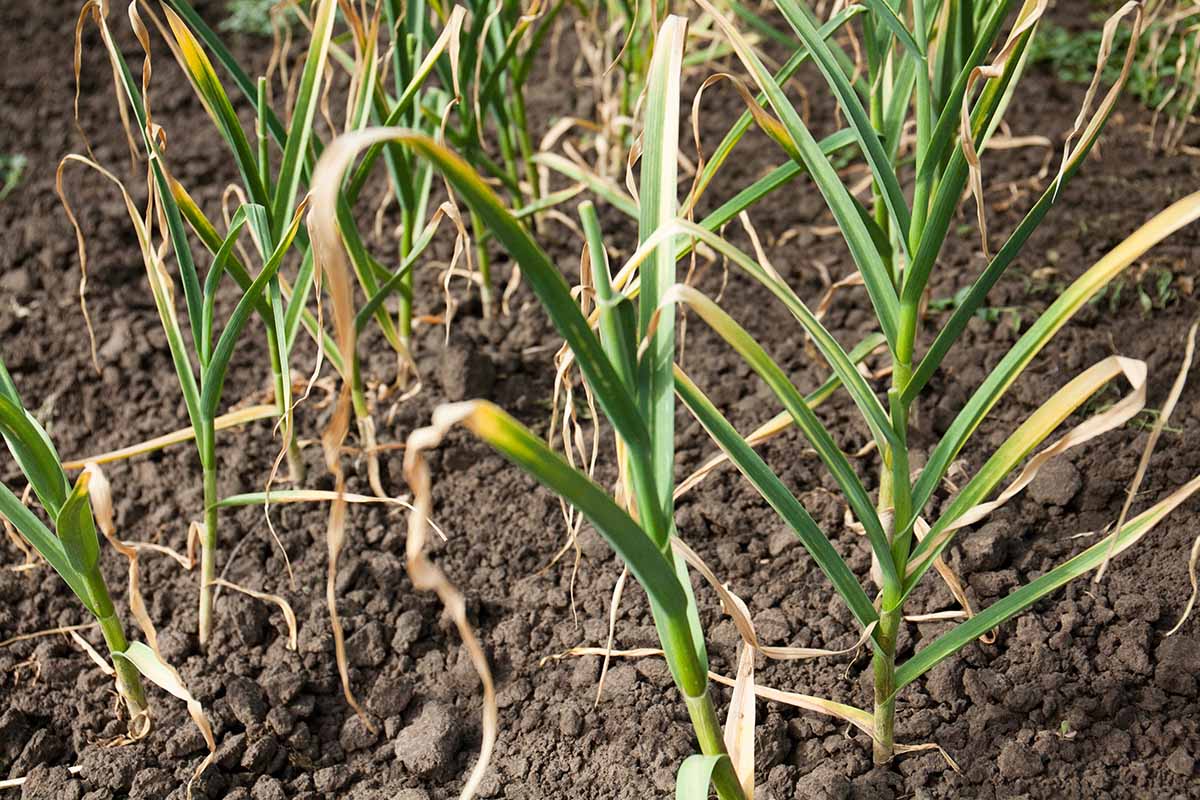
Basal rot, botrytis rot, downy mildew, and white rot can all cause the leaves to turn yellow or brown. The leaves will also collapse, typically after turning brown or yellow, but not always.
To learn about identifying and addressing these ailments, read our guide to managing garlic disease.
3. It’s Time to Harvest
Garlic can take nine months to mature. These aren’t plants for impatient growers! And when the time comes, it can be a bit of a surprise.
You get so used to those strappy leaves hanging out that you might not realize it’s time to give them the old heave-ho.
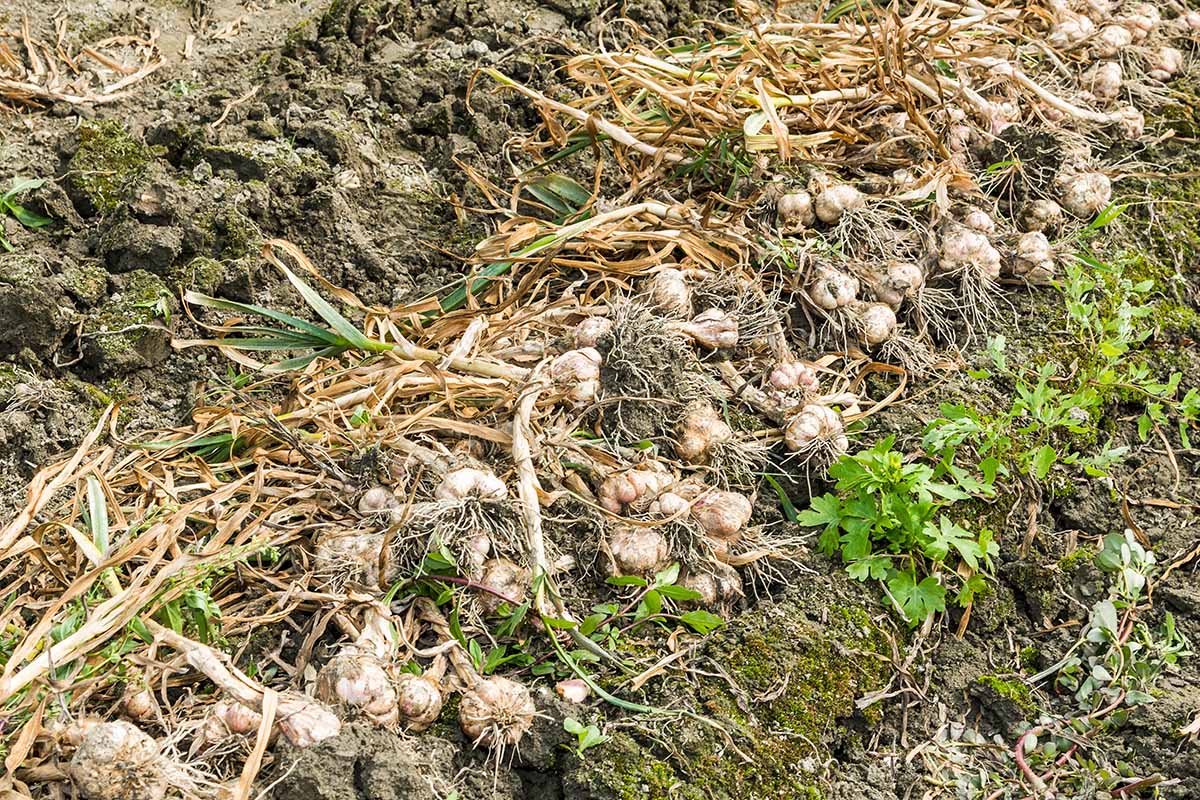
Consider how long it has been since you planted and when the bulbs are expected to be ready.
Make a note of this in your gardening journal at the beginning of the season, or set a reminder on your cell phone. If it’s close to time, it could just be that the plants are mature and that’s why the leaves are falling over.
Another hint is that only some of the leaves will be falling over at first. The leaves will be partially yellow or brown as the plant matures as well.
If you don’t remember when you planted or how long the cultivar you’ve chosen takes to mature, pull a bulb out.
If you can see individual cloves and the cloves are covered in a papery outer skin, it’s probably time to harvest.
4. Lack of Nutrients
Garlic isn’t particularly greedy. I never do more than add compost when I plant and then side-dress with well-rotted manure once in the spring.
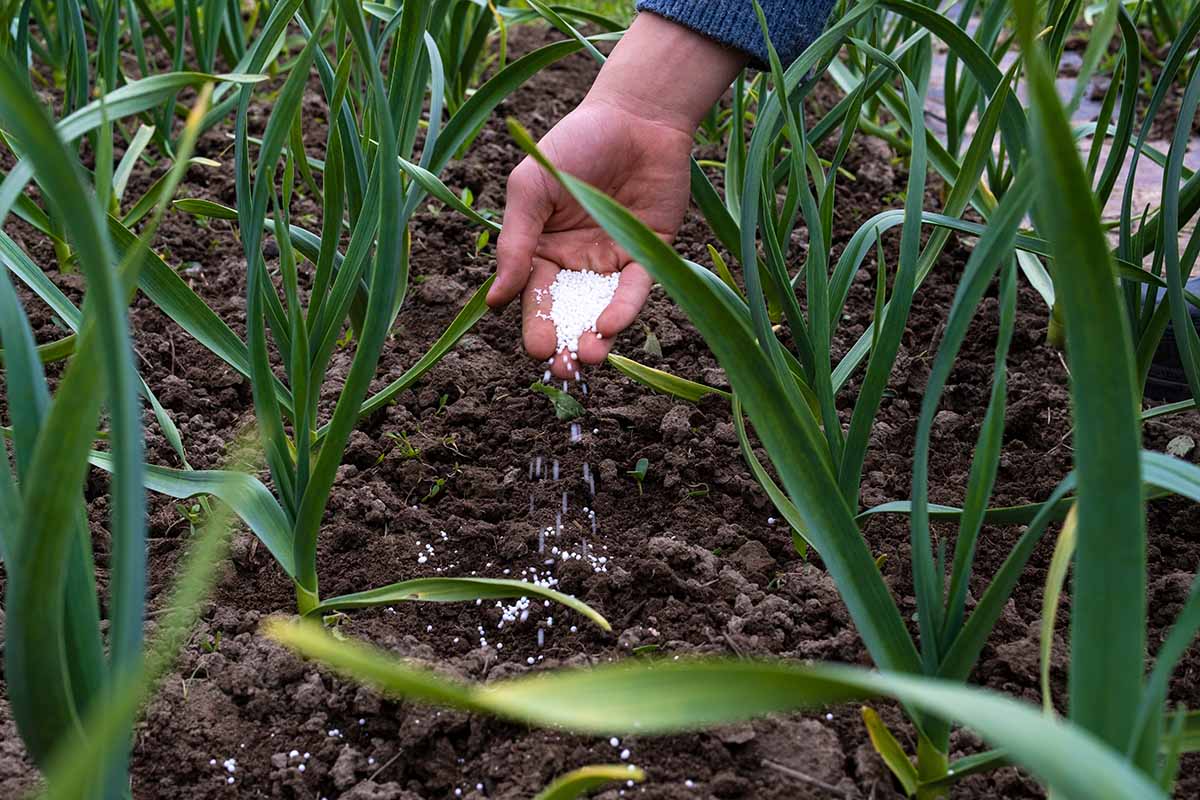
But if your soil is particularly depleted, your plants might need some food.
Slow growth and small plants are signs that they don’t have enough nutrients to grow well.
Feed with well-rotted manure or a balanced fertilizer. Down to Earth’s Vegetable Garden Mix has an NPK ratio of 4-4-4, which is about right.
Down to Earth Vegetable Garden Mix
Grab some at Arbico Organics in one-, five-, or 15-pound containers.
Feed your plants in early spring. I use the day when the cherry blossoms open to remind me. Never fertilize after scapes have formed.
5. Not Enough Light
Garlic needs full sun to grow well. Sometimes, you can get away with a bit less light.
But if your plants are receiving less than six hours of sunlight per day and none of the other causes on this list fit the bill, it could be that they’re growing in a spot with too little light.
When this happens, the leaves might be pale and weak, which causes them to collapse.
Unless you can prune other plants around them that are casting shade, there isn’t much you can do to improve the light exposure for an established crop.
Given enough time, the bulbs might still develop, but plan on planting somewhere else next year.
6. Pests
There are two pests that will cause your garlic leaves to fall over. These are nematodes and onion maggots.

Nematodes are microscopic little worms that can cause big time damage. They travel on dirty tools, gardening shoes, or infected seed cloves. Once they start feeding on your plants, collapsed foliage is a common symptom.
Buying treated, certified disease-free seed and using good garden hygiene practices can help prevent an infestation, and beneficial nematodes can help you kill the bad ones.
Onion maggots (Delia antiqua) are the larvae of flies. When these pests hatch in the soil, they nourish themselves by feeding on the roots of the bulbs.
Since the damage is happening underground, you might not know these maggots are present – until the leaves start to wilt and collapse, that is.
Sticky traps and row covers are effective at preventing the adults from reaching the plants and laying eggs.
For more tips on combating both critters, read our guide on garlic pests.
Certain mammals may cause problems as well. They won’t usually try to eat the plants, but they might trample through the patch or even curl up to take a nap on them.
When this happens, it usually results in trails through your gardens or areas flattened in a circular pattern.
If you can protect your plants from future traffic, they should recover just fine.
7. Watering Issues
Most plants will wilt if they don’t have enough water, and garlic is the same. Many cultivars require a bit less moisture just prior to harvest time, but it’s possible to take things too far.
If it isn’t harvest time, go out and stick your finger in the soil. Does it feel totally dry?
Try watering your plants thoroughly and then give them several hours or overnight to recover. If they perk back up, then you’ll know that the plants weren’t receiving as much water as they needed.
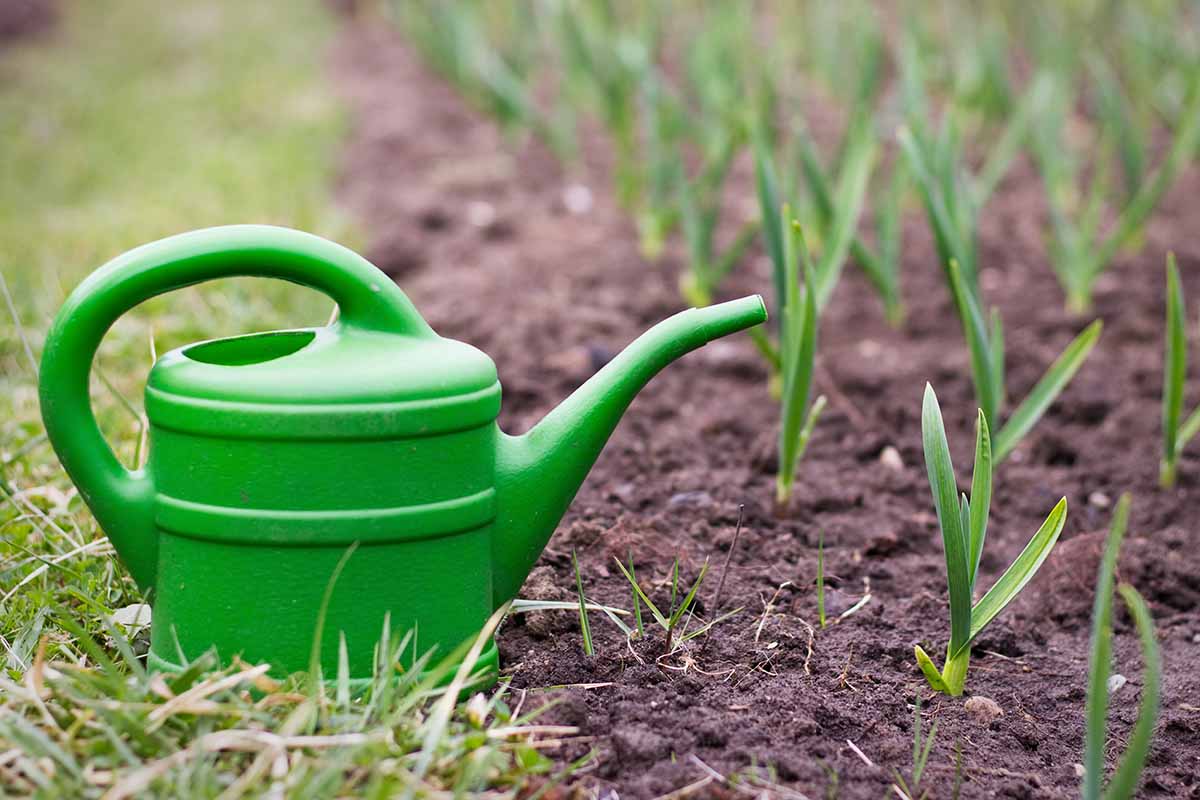
It might just be that you had a particularly hot day or maybe your irrigation system didn’t turn on.
Going forward, check your soil frequently to determine whether it needs supplemental moisture or not. The soil should be moist during the spring and fall but probably won’t require any additional moisture during the dormant winter season.
The soil should usually be a little bit drier a few weeks before the expected harvest date. Not all cultivars need a period of dryness, however.
Overwatering leads to all kinds of problems. Not only can it drown the roots by depriving them of oxygen, but it can create the ideal conditions for disease as well.
Both over- and underwatering will cause the leaves to collapse. The foliage will typically be soft rather than dry or crispy if you are overwatering. It might turn yellow or brown, or it might stay green. Dry plants will turn brown or yellow and crisp starting at the edges.
At any point except for the drying out period before harvest, stick your finger in the soil. Does it feel any wetter than a well-wrung-out sponge? You might be overwatering.
Try watering less for a few days. You might even allow the soil to dry out completely between watering for a while.
Does it feel dry? You might need more water, unless it’s the short period right before harvest when many cultivars need a period of dryness.
If you suspect disease has gotten hold of your plant, check out the section of this guide on diseases as well.
Stand Up Straight!
Garlic is such an essential, both in the garden and the kitchen. We can’t let it fall down! But don’t feel bad if it happens. We all experience it at some point.
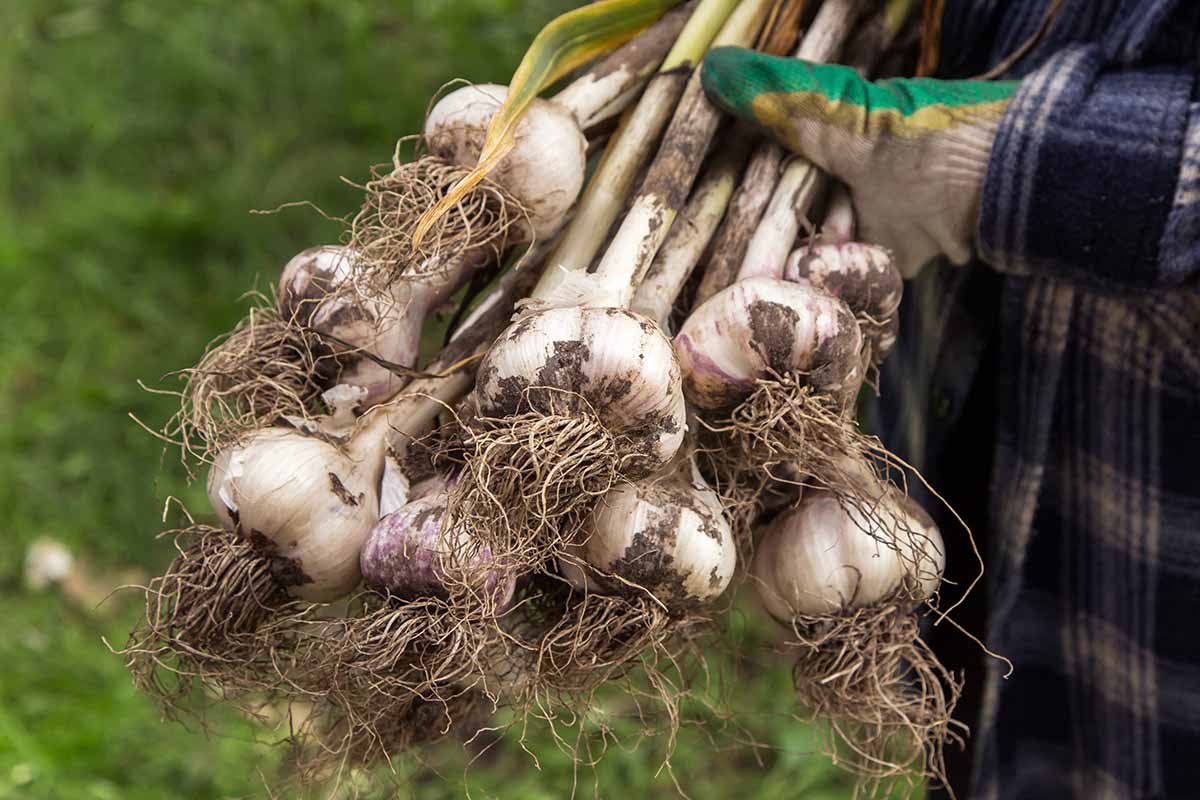
Hopefully, this guide helped you narrow down the cause of your feeble foliage. Let us know in the comments what was going on or if you still weren’t able to determine a cause. Maybe we can help!
Figuring out how to straighten up those garlic plants is just the tip of the iceberg. There’s so much more to know about growing this versatile allium.
If you’re ready to learn more, here are a few guides to get you started:
